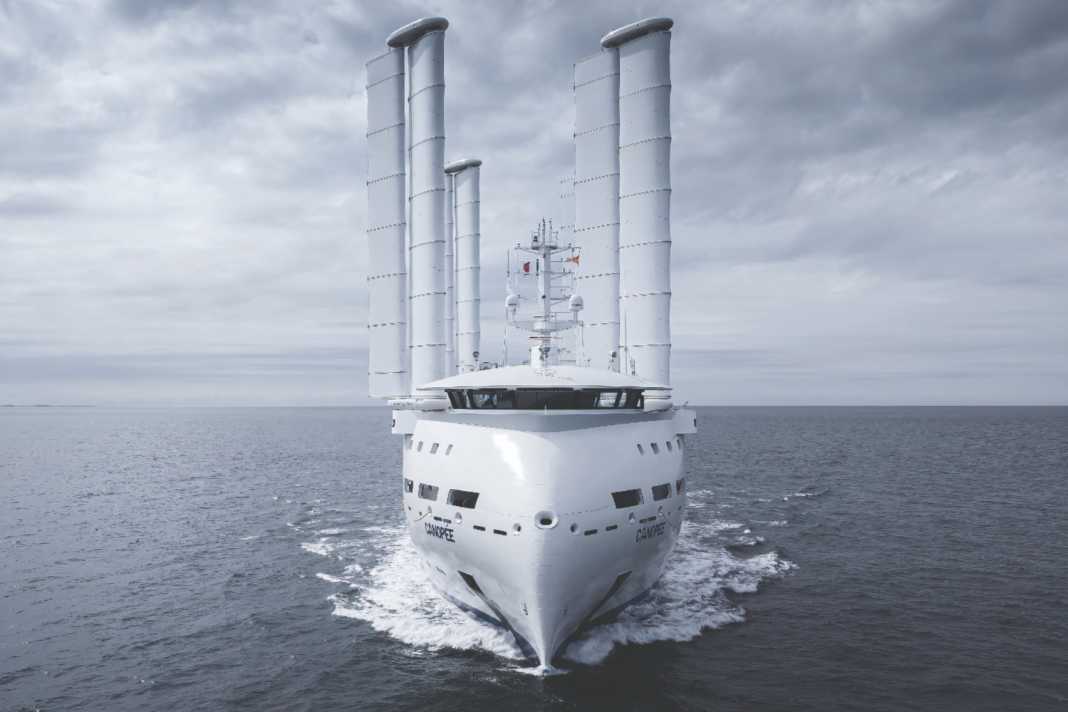"Canopée": Cargo ship with sails reaches almost 15 knots - and saves money in the process






Two years after entering service, the "Canopée" cargo ship is delivering impressive results. As the first large hybrid cargo ship with sail propulsion, it demonstrates the enormous potential of wind-assisted propulsion in commercial maritime transport. The 122-metre-long ro-ro vessel, equipped with four automated OceanWings sails, was specially designed to transport components for the Ariane 6 rocket programme between Europe and French Guiana. The operators, a joint venture between Jifmar and Zéphyr & Borée, report significant improvements in performance thanks to continuous software optimisations.
Innovative sail technology
The four OceanWings sails of the Canopée are each over 36 metres high and have a surface area of 363 square metres. Their design enables 360-degree rotation for optimum alignment with the wind. Each sail consists of two wings - one forward and one aft - with the aft wing swivelling around the secondary mast. The sails are set like an accordion on the two masts. This design allows precise adjustment of the angle of attack and camber to maximise efficiency in different wind conditions.
Impressive performance data
The integration of the OceanWings sails has proven to be effective. Under normal operating conditions, each sail saves an average of 1.3 tonnes of fuel per day. This corresponds to an output of around 300 kW per sail or a total of 1200 kW for all four sails. In total, this results in a daily saving of 5.2 tonnes of fuel, which corresponds to a CO2 reduction of 20.8 tonnes.
The performance of the OceanWings sails is constantly being optimised through continuous improvements to the software and AI platform. On one of the most recent transatlantic crossings, the Canopée achieved impressive savings of an average of 2.2 tonnes of fuel per day and sail. This corresponds to a saved engine power of 510 kW per sail or a total of 2 MW for the entire ship. It is also worth noting that the ship reached speeds of up to 13.7 knots under sail power.
Good prospects
According to the operators, the OceanWings technology has not only proven to be efficient, but also extremely reliable. Over the past two years, the system has recorded an impressive availability of 99.6 per cent. This high reliability, combined with the significant savings, makes the technology attractive for commercial use. The company plans to extend the wing sail concept to additional and larger vessels.
